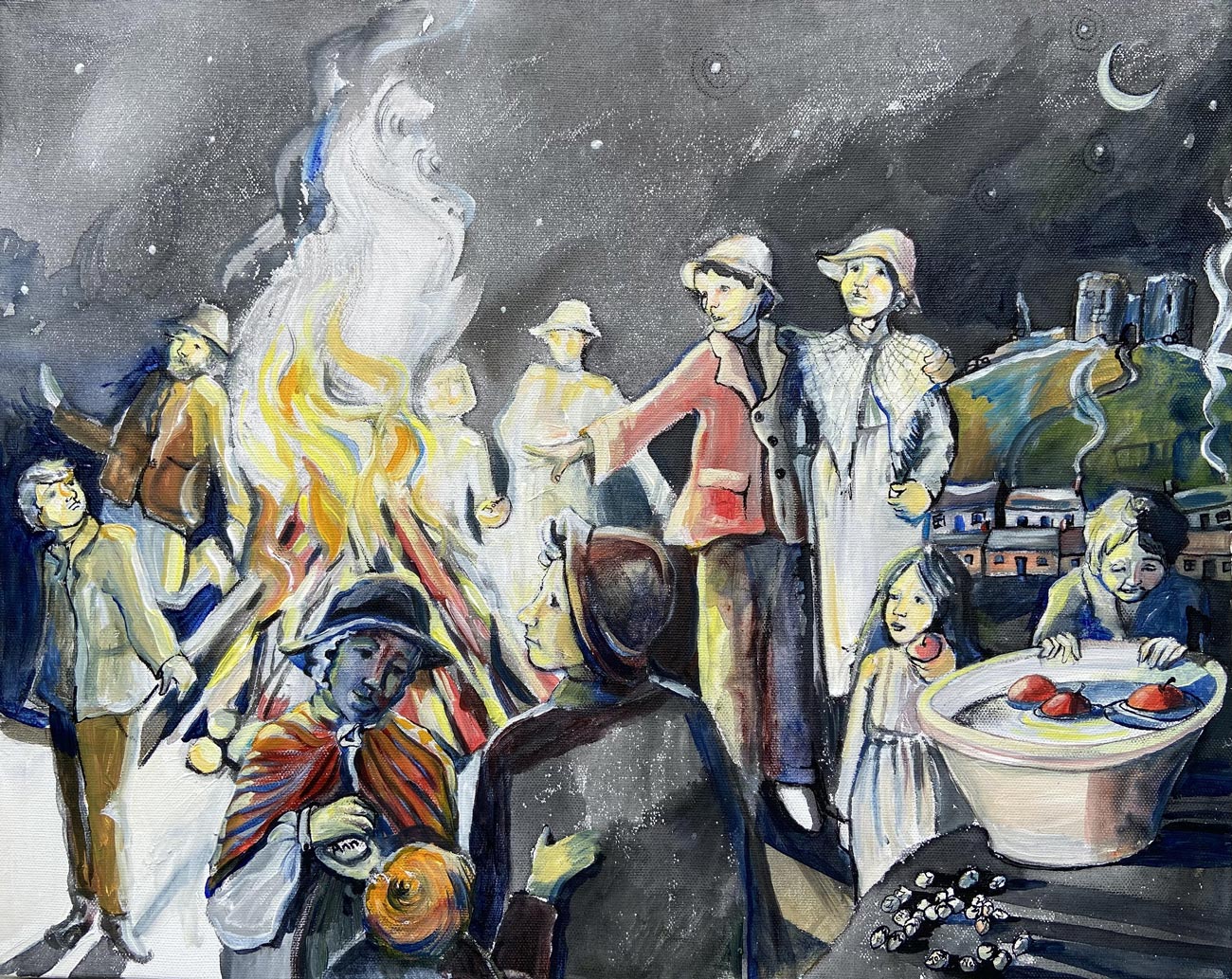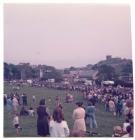Content can be downloaded for non-commercial purposes, such as for personal use or in educational resources.
For commercial purposes please contact the copyright holder directly.
Read more about the The Creative Archive Licence.
Description
In ancient times the end of summer and the coming of the darkness of winter on the 1st of November was marked by the festival of 'Nos Calan Gaeaf'. This was a busy time; the harvest was finished and it was time to bring the animals down from the pastures in the hills. It was an opportunity for the folk to gather together and bonfires were lit in prominent places the evening beforehand.
All aspects of life in the mostly rural communities were governed by traditions and superstitions and this was celebrated as the end of the old year and the beginning of the new year. The evening commenced in a light hearted manner, with a Noson Lawen (Entertainment Evening) such as described by John Lloyd Williams, the well known musician and collector of folk songs, in the sonata 'Nos Calan Gaeaf' which he composed.
When the people gathered at the farmhouse in Garndolbenmaen they sang the opening chorus. There would be much more singing and traditional pastimes such as apple bobbing competitions. A bonfire was lit and everyone gathered around it. One tradition was to throw hazelnuts into the flames and how they burnt was interpreted. If the nut burnt brightly the person would fall in love and marry. If the nut made a loud crack the person would have bad luck. Tricks were played and other mischief carried out and the folk had an enjoyable time but, as darkness drew in and the bonfire started to die out the atmosphere changed.
Marked stones were thrown into the flames; if they were not found amongst the ashes in the morning the person who threw it would die that year. They believed that on this night elves, goblins, ghosts, fairies, and other supernatural spirits and beasts emerged from the otherworld and roamed the countryside, particularly waiting at crossroads and stiles for unwary travellers so as to devour them or steal their souls. One of these frightening beasts was the 'Hwch ddu gwta' (the black short tailed sow) who was sometimes accompanied by a headless woman. This creature appears in stories from all over Wales. Myrddin Fardd (John Jones) the blacksmith and antiquarian from Chwilog wrote that everyone chanted the following verse:
Hwch ddu gwta
Ar ben pob camfa
Bob nos G'langaua'.
Ar ben pob camfa
Hwch ddu gwta
Gipio yr ola'.
Meaning that the Black Short Tailed sow was waiting at every stile and would snatch and devour the last one to leave. Of course everyone rushed off home in great fear in case they were last! Two or three centuries ago Calan Gaeaf transferred to North America and came back in recent years having been Americanised as Halloween. Sixty years ago pumpkins and 'Trick or Treat' were unknown in Eifionydd; instead faces were carved on turnips.








Do you have information to add to this item? Please leave a comment
Comments (0)
You must be logged in to leave a comment